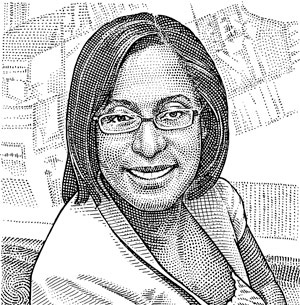Shantelle Lopez ’99 Applies GIS Technology in the Bahamas
By Robert Bruce Slater
MARKERS IN our front yards help us remember where the main water line runs underground from the street to our homes. Imagine keeping track of more than 500 miles of water mains, hydrants, sewer mains, and manhole covers.
 That challenge was placed before Shantelle Lopez ’99 when she returned to her native Bahamas after graduating from Lafayette with a civil engineering degree. She planned to do “pure civil engineering work,” but her ability with GIS (geographic information systems) technology was noticed in an interview with government officials and led to her first job with the new National GIS Center.
That challenge was placed before Shantelle Lopez ’99 when she returned to her native Bahamas after graduating from Lafayette with a civil engineering degree. She planned to do “pure civil engineering work,” but her ability with GIS (geographic information systems) technology was noticed in an interview with government officials and led to her first job with the new National GIS Center.
Three years later, she was hired to establish and manage a GIS department for the Bahamas Water and Sewerage Corporation, a government unit responsible for the development of the nation’s water resources, water distribution and quality, and waste management.
Lopez discovered that much of the information about the nation’s water and sewer infrastructure — recorded on paper in the company’s archives — was wrong or out of date, and many important details were stored only in the minds of employees who had worked in the field for many years. She authored a strategic plan to use GIS to map and track the conditions of water mains, valves, meters, hydrants, storage facilities, and sewer mains in a digital database that is available to employees in the office and in the field. The plan also calls for collecting information, using handheld devices, on the location of each customer to improve efficiency in billing, service-call scheduling, and other customer services.
“Today, we have 670 miles of mains digitized and 47,000 customers in the GIS,” she says. Much of her plan has been implemented on the island of New Providence with 211,000 residents, about 60 percent of the total population of the Bahamas, and where the capital, Nassau, is located.
“We are already expanding the network to other islands,” she adds. “In-ground assets have been digitally mapped on San Salvador and Inagua, and work has begun on digitizing our infrastructure and capturing global positioning data on customer meters on four other islands.” She also handles training and oversees a call center that customers use to notify the company about problems.
Lopez’s skill with GIS arose directly from a project she conducted with Roger Ruggles, associate professor of civil and environmental engineering, during her senior year at Lafayette. She explored the history and applications of GIS and constructed a simple GIS model of Forks Township, Pa., just north of Easton.
Her application of GIS in the Bahamas has improved workflow, but “the full power of the tool has yet to be realized.” While her supervisors have been strong supporters of implementing GIS technology and have been instrumental in securing funding for software, hardware, and staffing, getting everyone to understand the value and potential of the system is a challenge.
“I need to be a marketing manager at all levels. In 2011, I am hoping to get users to embrace the analytical capabilities of the GIS system to leverage the data we have compiled over the years,” she says. For instance, with the pressure for real-estate development, GIS makes it possible to assess the water and sewer systems’ current capacity and project what would be necessary in materials and dollars for expansion.
Lopez is proud that her work is making a difference.
“To identify a problem, then build and implement an effective solution makes my job meaningful. Witnessing the change GIS has brought to the business as it became an integral part of the staff’s daily routine has been extremely satisfying. I want our employees to come to the realization that they cannot imagine the workplace without GIS.”